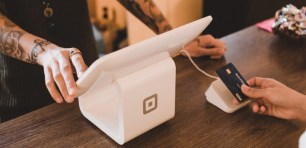
Afterpay co-founder Nick Molnar. Source: supplied.
Aussie fintech success story Afterpay has accepted a $39 billion acquisition offer, having never turned a profit or (for the time being at least) paid out a dividend to its investors.
It’s the leader of the buy-now, pay-later pack; the great disruptor and the ultimate COVID-19 growth story.
An uptick during COVID-19, as retailers shifted their operations online, landed Afterpay an enterprise value more than 32-times bigger than was forecast for 2021.
Now, it’s one of Australia’s bonafide tech darlings, boasting a market cap of over $37 billion, at the time of writing.
Growth has been put down to co-founder Nick Molnar’s ‘natural sales ability’ and early success for retailers using Afterpay.
But it hasn’t been all smooth sailing. Here’s a brief timeline of the Afterpay story.
Early days
Afterpay’s co-founders Anthony Eisen and a Nick Molnar met as neighbours, when Eisen was made aware of the entrepreneurial endeavours of a teenage Molnar, living across the street.
The pair forged a working relationship, and in 2014 founded Innovative Payments, the tool that would blossom into the Afterpay we know today.
February 2015
The co-founders brought on their first retail customer in 2015, with fashion group Princess Polly.
According to an article in the Australian Financial Review, the offering was immediately popular with the retailers customers, who were mainly young people without credit cards.
Average basket sizes for those using Afterpay were up by $44, compared to those not using Afterpay, and revenues were directly lifted by 15%.
June 2015
Later that year, Afterpay raised its first $8 million, ultimately the only venture funding it would bring on board.
May 2016
Afterpay listed on the ASX in May 2016, and with a valuation of $140 million. By August, its share price had more than doubled, and the team were well on their way to rallying Australian small businesses.
“We have a portfolio of strong brands already, including a lot of small businesses,” Molnar told SmartCompany at the time.
“Our customers are our biggest advocates and they’re really passionate about our brand.”
March 2017
Then being hailed as an ‘emerging fintech’, Afterpay secured a major partnership with Aussie retail giant Myer.
At that time, early adopter Kate Morris, founder of Adore Beauty, told SmartCompany the tool worked well for her business and her customers. But she noted it might not be the right route for everyone.
“It lends itself to products where there’s a sense of impulse purchase,” she said.
She also pointed to the cost, noting the service was pricier than credit cards or PayPal.
December 2017
By December 2017, the trend had people talking, and striving to understand how Afterpay’s business model worked, and what the risks were.
January 2018
Afterpay made a push into the US in 2018, starting out with big-name retailers including Anthropologie and Urban Outfitters.
February 2019
Afterpay and its BNPL counterparts escaped stricter regulations, as a senate enquiry decided they will not have to conduct credit checks on customers.
However, the final report suggested more regulation could be on the way.
August 2020
Afterpay made its move in the European market, through the acquisition of Spanish fintech Pagantis.
February 2021
Earlier this year, Afterpay announced it was collaborating with Stripe and Squarespace to allow smaller e-commerce players to offer BNPL payments.
April 2021
In April, the fintech teamed up with hospitality tech startup Mr Yum to offer deferred payments on dinner and drinks.
Acquisition
The first half of 2021 saw rumblings of a US listing for Afterpay, hints it could be entering SME financing, and questions as more and more players entered the sector.
Finally, in early August it announced it had agreed to a whopping $39 billion acquisition offer from Square.
Controversies
There have been bumps along the road, with Afterpay haunted by controversy and scepticism almost since day one.
In April 2018, the team was forced to defend itself after a 16-year-old was able to order $300 worth of booze to be delivered to their door. Not only was Afterpay selling alcohol to a minor, a report found, it also allowed the sale despite the teen having only $60 in their account.
The BNPL sector still playing outside the realms of formal regulation, instead drawing up their own code of practice, there have been questions as to whether they operate with consumers’ best interest at heart.
This has become an especially hot topic of discussion as more players come to market, and with the emergence of pay-on-demand services that offer consumers an advance on their paycheck.
In 2020, a report from the Australian Securities and Investments Commission in 2020 found that some 21% of people who used BNPL products had missed payments, and 20% had cut back on or gone without essentials, including food, to make their payments on time.
There have also been ongoing questions around whether BNPL is good for the retailers.
With controversial ‘no-surcharge’ rules preventing merchants from passing the costs of using Afterpay on to their customers, some saw BNPL as simply another thing to eat into the margins of struggling retailers.
And finally, just a matter of weeks ago, Financial Counselling Australia took against a “disturbing” ad campaign featuring actor Rebel Wilson, which they said played down the risks associated with BNPL products.
Handpicked for you

When Molnar met Eisen: The story of Afterpay



COMMENTS
SmartCompany is committed to hosting lively discussions. Help us keep the conversation useful, interesting and welcoming. We aim to publish comments quickly in the interest of promoting robust conversation, but we’re a small team and we deploy filters to protect against legal risk. Occasionally your comment may be held up while it is being reviewed, but we’re working as fast as we can to keep the conversation rolling.
The SmartCompany comment section is members-only content. Please subscribe to leave a comment.
The SmartCompany comment section is members-only content. Please login to leave a comment.